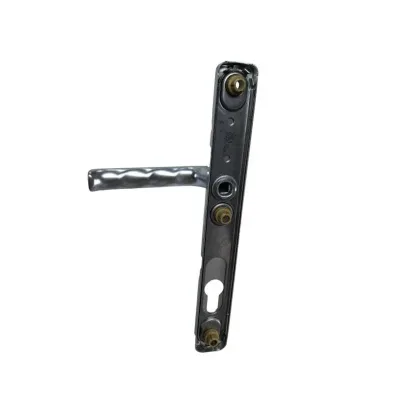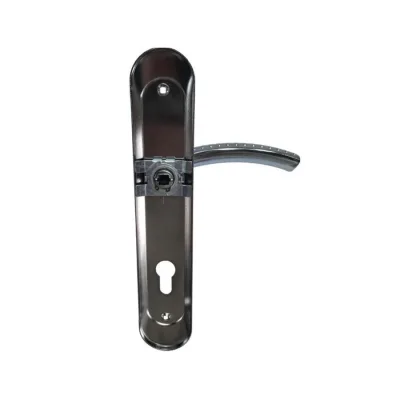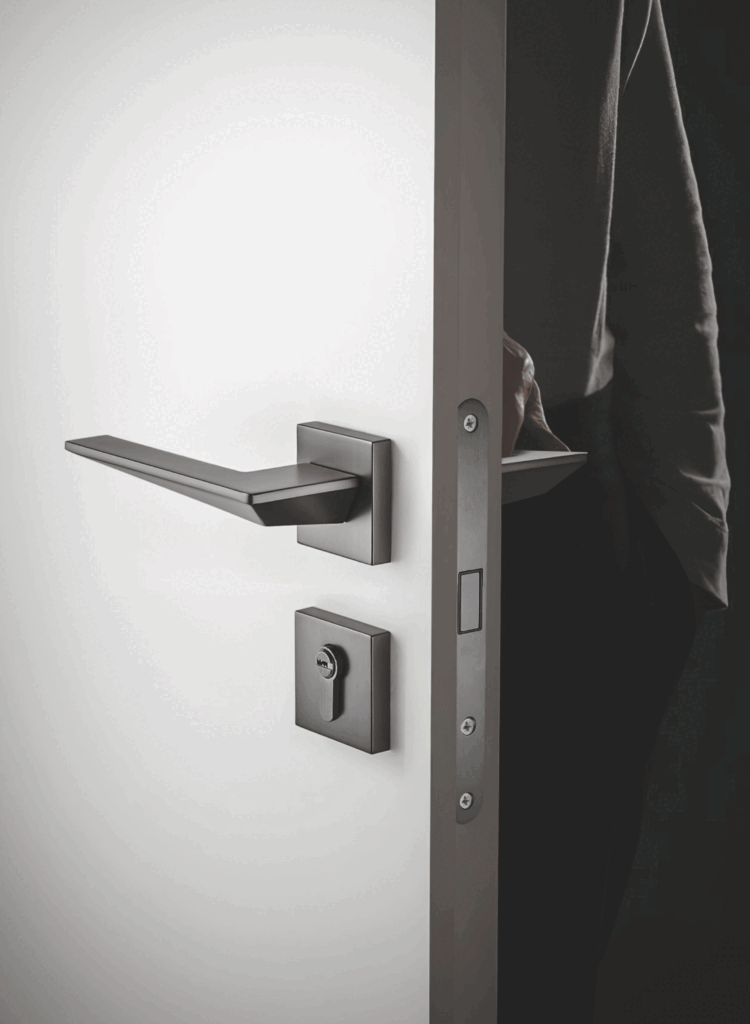In-home decoration and interior design, details often make or break the overall effect. While door handles might seem like a trivial detail, they play a crucial role in both the functionality and overall style of a door. Two popular types are spring-loaded and non-spring door handles, each offering distinct advantages. In this article, we will compare these two types of handles, focusing on design, usability, safety, durability, maintenance, and cost.
1. What Are Spring and Non-Spring Door Handles?
Before we dive into the comparison, let’s first define the two types of door handles:
- Spring-loaded Door Handles: These handles feature an internal spring mechanism that allows the handle to return to its original position after being pressed or pulled. Spring-loaded handles are typically used on doors that require automatic resetting, such as in commercial environments.
- Non-spring Door Handles: These handles do not have an internal spring mechanism. After being pressed or pulled, they remain in the position they were left. Non-spring handles are more common in residential or low-traffic areas where automatic resetting is not required.

Non-Spring Door Handle

Spring Door Handle
2. Design & Aesthetics
Spring-loaded Door Handles:
- Design Flexibility: Spring-loaded handles typically have more complex internal mechanisms, allowing for more intricate and ergonomic designs. This feature is particularly appealing in environments where ease of use is a priority, with the smooth return motion being an added benefit.
- Aesthetic Appeal: These handles look more refined, with a polished, ergonomic appearance. They are commonly found in high-end residential and commercial doors, offering functionality and a sophisticated design.
Non-spring Door Handles:
- Simplicity in Design: Non-spring handles are generally simpler in both form and function. If you’re aiming for a minimalist look, this can be an advantage.
- Variety: Available in a wide range of styles, these handles can adapt to both traditional and modern aesthetics. They often feature sleek, clean lines and compact designs, making them ideal for modern decor.
Key Takeaway: Spring-loaded handles tend to be more complex in design, while non-spring handles offer simplicity and versatility.
3. Usability & Convenience
Spring-loaded Door Handles:
- Automatic Return: One of the standout benefits of spring-loaded handles is their automatic return feature. After being pressed or pulled, the handle returns to its neutral position, making it more convenient to use in high-traffic areas.
- Effortless Operation: With the spring mechanism, users don’t need to manually reset the handle, ensuring smoother operation. This is especially useful in businesses like hotels or office buildings where doors are frequently opened and closed.
Non-spring Door Handles:
- Manual Operation: Without the spring mechanism, non-spring handles require manual adjustment. In high-traffic environments, this can be inconvenient as the handle stays in whatever position it is left.
- Ideal for Low-Traffic Areas: Non-spring handles are well-suited for residential doors or offices where doors aren’t used as frequently.
Key Takeaway: Spring-loaded handles are more suitable for high-traffic areas, offering ease of use, while non-spring handles are ideal for low-traffic environments.
4. Security & Safety
Spring-loaded Door Handles:
- Enhanced Security: In both commercial and residential settings, spring-loaded handles often feature additional safety functions, such as automatic locking (in certain models). This ensures that the door locks after every use, preventing unauthorized access.
- Safety Considerations: The spring mechanism can be safer in some applications as it reduces the risk of the handle being left in an open position, which could lead to accidents or unwanted drafts.
Non-spring Door Handles:
- Simple Locking: Non-spring handles typically rely on mechanical locks or latches. While effective, they lack the automatic resetting feature that spring-loaded handles offer, which could be a security concern in certain environments.
- Fewer Parts: With fewer moving parts, non-spring handles are less prone to mechanical failure, which can sometimes be an issue with more complex spring-loaded systems.
Key Takeaway: Spring-loaded handles usually offer more security features, while non-spring handles still provide reliable safety with fewer components.
5. Durability & Maintenance
Spring-loaded Door Handles:
- Durability: While generally durable, the internal spring mechanism in spring-loaded handles can wear out over time. If the spring loses tension, the handle may fail to return to its original position, requiring maintenance or replacement.
- Maintenance Needs: Due to the spring system, spring-loaded handles may require more frequent maintenance. Regular checks are recommended, especially in high-use environments.
Non-spring Door Handles:
- Longer Lifespan: With fewer moving parts, non-spring handles generally last longer and experience less wear and tear.
- Lower Maintenance Costs: Non-spring handles typically require less maintenance and have lower replacement costs due to the absence of an internal spring mechanism.
Key Takeaway: Non-spring handles are more durable and require less maintenance, making them ideal for low-maintenance environments.
6. Cost & Ideal Usage Scenarios
Spring-loaded Door Handles:
- Higher Cost: Due to their more complex design and spring mechanism, spring-loaded handles are generally more expensive than non-spring handles. However, the added features, such as automatic return and enhanced usability, may justify the investment.
- Best for High-Traffic Areas: Spring-loaded handles are ideal for commercial spaces, hotels, offices, or public buildings where frequent use is expected.
Non-spring Door Handles:
- Cost-Effective: Non-spring handles are typically more affordable, both in terms of upfront costs and long-term maintenance.
- Best for Residential and Low-Traffic Areas: Non-spring handles are perfect for homes, apartments, or offices with moderate use.
Key Takeaway: Spring-loaded handles tend to be pricier, making them ideal for commercial use, while non-spring handles are more budget-friendly and suitable for residential or low-traffic environments.
video presentation
Conclusion
Both spring-loaded and non-spring door handles have their pros and cons. Spring-loaded handles excel in design, ease of use, and security, but come at a higher cost and require more frequent maintenance. Non-spring handles, on the other hand, offer better cost-effectiveness and durability but may lack some of the convenience and safety features of spring-loaded handles. Consumers should weigh their specific needs and budget when making a decision.
We hope this article has provided valuable insight into choosing the right door handles for your needs. If you have any questions or would like further advice, feel free to contact us. UMAY is committed to providing high-quality door hardware products to meet your diverse needs, and we look forward to working with you to create safe and convenient living and working environments.
Share This Story, Choose Your Platform!

